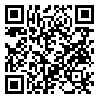Sat, Dec 6, 2025
[Archive]
Volume 17, Issue 2 (5-2025)
itrc 2025, 17(2): 35-46 |
Back to browse issues page
Download citation:
BibTeX | RIS | EndNote | Medlars | ProCite | Reference Manager | RefWorks
Send citation to:



BibTeX | RIS | EndNote | Medlars | ProCite | Reference Manager | RefWorks
Send citation to:
Salehi M, Yarahmadi M, Khan Mohammadi E, Damia A. Optimizing LSTM Networks with Genetic and Q-Learning Algorithms for Persian COVID-19 Fake News Detection. itrc 2025; 17 (2) :35-46
URL: http://ijict.itrc.ac.ir/article-1-583-en.html
URL: http://ijict.itrc.ac.ir/article-1-583-en.html
1- Department of Computer Engineering Khor.C., Islamic Azad University Khorramabad, Iran
2- Department of Statistics, Khor. C., Islamic Azad University, Khorramabad, Iran
3- Faculty of Computer Engineering Amirkabir University of Technology Tehran, Iran.
4- Faculty of Computer Engineering K. N. Toosi University of Technology Tehran, Iran
2- Department of Statistics, Khor. C., Islamic Azad University, Khorramabad, Iran
3- Faculty of Computer Engineering Amirkabir University of Technology Tehran, Iran.
4- Faculty of Computer Engineering K. N. Toosi University of Technology Tehran, Iran
Abstract: (1017 Views)
—Currently, the development of the coronavirus as a pandemic and its global spread are a major concern for our society and the international community. In recent years, however, a growing number of people have transferred their primary source of news and information to social networks. So, the broad transmission of inaccurate and misleading information on social media is significant for the majority of politicians. Not only are we fighting against COVID-19, but also a "infodemic." To address this, on COVID-19, we have collected and released a labeled dataset of 7,000 Persian social media postings of true and fake news. Several languages, including Arabic, English, Chinese, and Hindi, have recognized Covid 19 fake news. This study utilizes a deep neural network approach to simplify feature extraction, develop a strong ability to learn, and automatically discover features compared to typical machine learning approaches, as well as a novel approach to improving outcome using a deep neural network. The genetic algorithm and reinforcement learning are provided for setting and optimizing the hyper-parameters of the deep learning algorithm, which has led to better outcomes than previous research and achieved an accuracy rate of 0.92 percent.
Keywords: COVID-19 pandemic, detecting false news, deep learning, reinforcement learning, genetic algorithm.
Type of Study: Research |
Subject:
Information Technology
| Rights and permissions | |
 | This work is licensed under a Creative Commons Attribution-NonCommercial 4.0 International License. |




